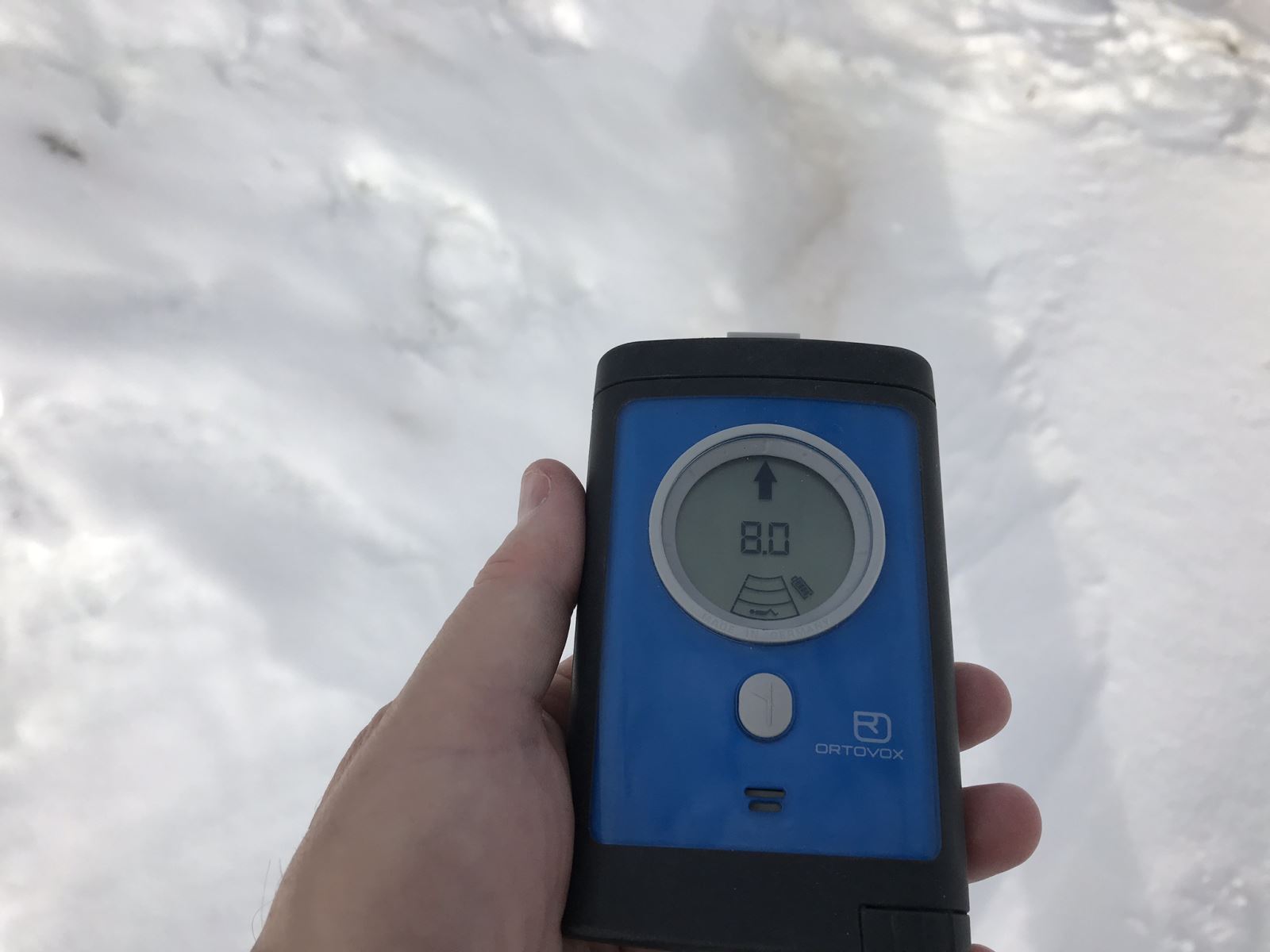
Battery Function
So let’s harmonize battery function with beacon performance.
Avalanche transceivers operate on relatively low power requirements. A fresh set of batteries will likely last more than 25 rides (200 hours) so you don’t need to worry about saving battery life by waiting until you’re at the mountain before you turn your beacon on. Turn it on before you put it on your body. That way there is never a chance for you to forget to switch it on out in the field.
In search mode, your power requirements are higher … but your battery life will most always extend beyond the life expectancy of your buried friend. But the stronger the battery, the stronger the signal. In a multiple burial situation, your beacon may pick up the burial with the strongest battery first, rather than the burial that is more proximate to your position. So if I were buried, I certainly hope my beacon batteries were every bit as strong as any other unfortunate soul covered by snow.
Most avalanche beacons adhere to the European standard of battery life exceeding 200 hours in transmit mode followed by a minimum of one hour in search mode at a temperature of 50 degrees F (the proximate temperature the beacon would be if positioned against your body).
In most user manuals, beacon manufacturers offer specific suggestions for battery life that are well on the safe side. And after all, isn’t the concept of the avalanche beacon designed to keep you on the safe side?
All batteries are not created equal. Different brands may vary slightly in their size and ampage. Also, we found that off-brand batteries showed a much more frequent inconsistency with performance. Don’t mix/match brands and don’t settle for the cheapest cell. After all, isn’t your life worth a few more pennies at the convenience store?
Even though Lithium batteries have a good reputation for working in cold weather, last longer and are lighter, most all avalanche beacon manufacturers insist you use alkaline batteries in their beacons. This is likely more on how the circuitry works to detect battery life. On a Lithium battery your discharge curve is flat … you can show 100 percent battery life one minute and be totally dead the next. However, alkaline batteries are very consistent in the gradual descent of battery life. And never trust your life or the life of a friend to a rechargeable battery.
However, we also found with our testing that even though your battery life may show a depletion from 100 percent to say 70 percent after an extended period of use, after you turn off your beacon for a couple of days, the battery life may show a rejuvenation back up to the 90 percent range. But don’t be completely fooled. On the next usage period the first 20 percent will likely pass by much faster than the previous time.
There are a lot of rumors floating around that claim certain items can interfere with an avalanche beacon function—from magnets to the electronics of a snowmobile. We tried to verify some of these rumors but couldn’t create any consistent reoccurring data to submit as proof with the exception of Wifi interference.
However, it is recommended that when in search mode you avoid proximity (a foot or two) with any electrical device or large metal object.
Finally, there have been plenty of articles ranking avalanche beacons. We weren’t trying to find the best one … but we did recognize the BCA Tracker 3 as being one of the easiest and most effective beacons we were testing.
A complete report on our beacon tests can be found at www.snowest.com.